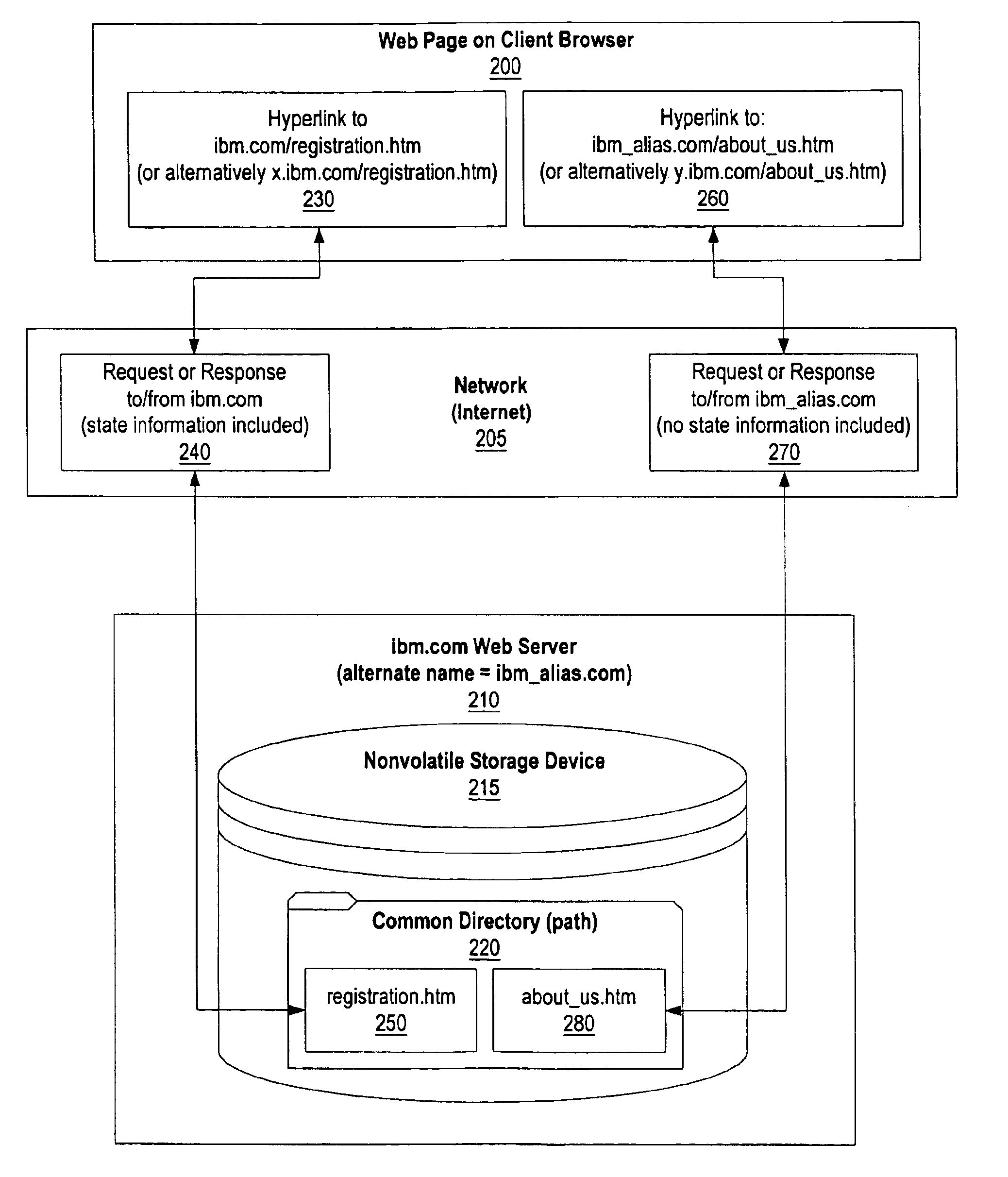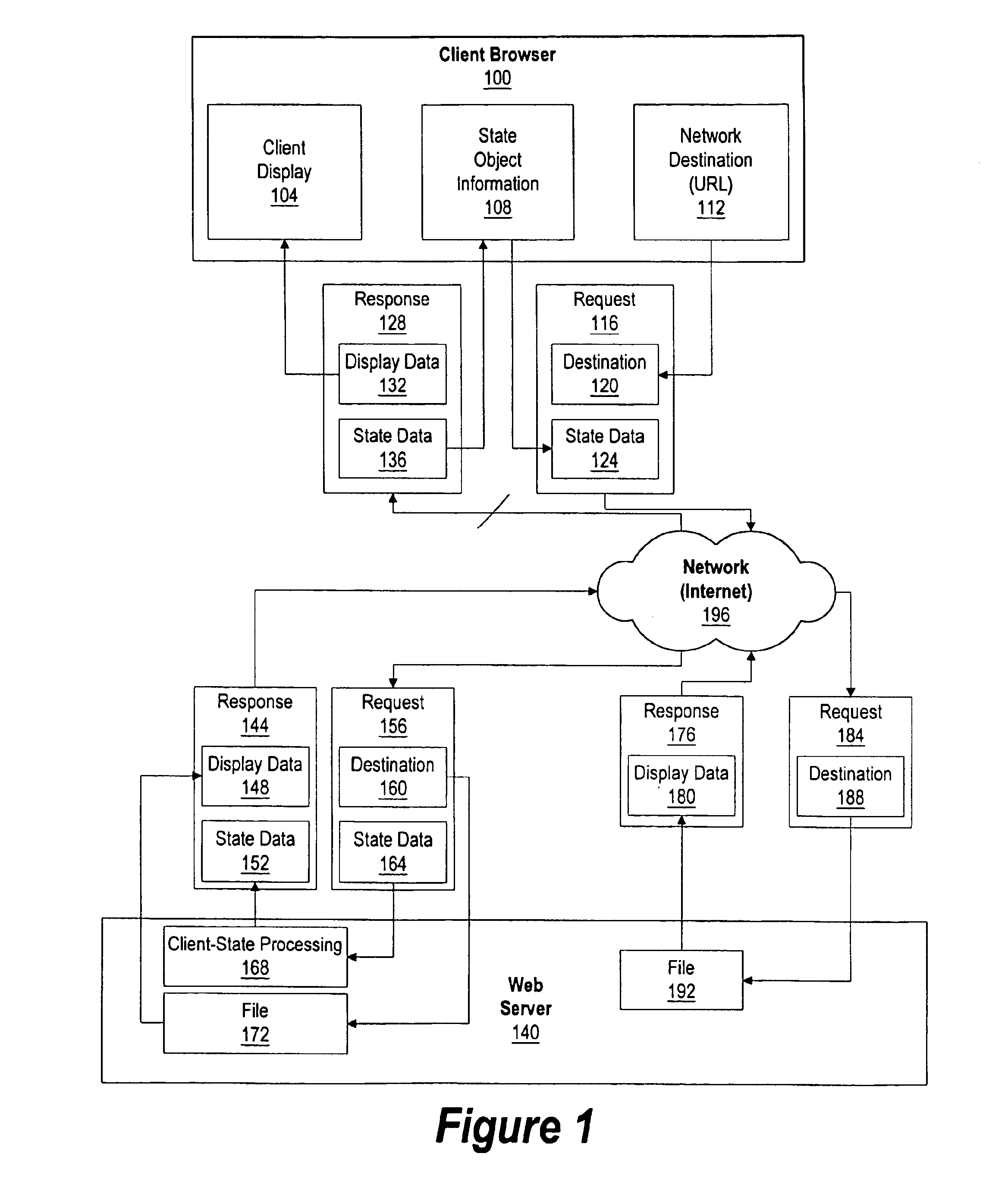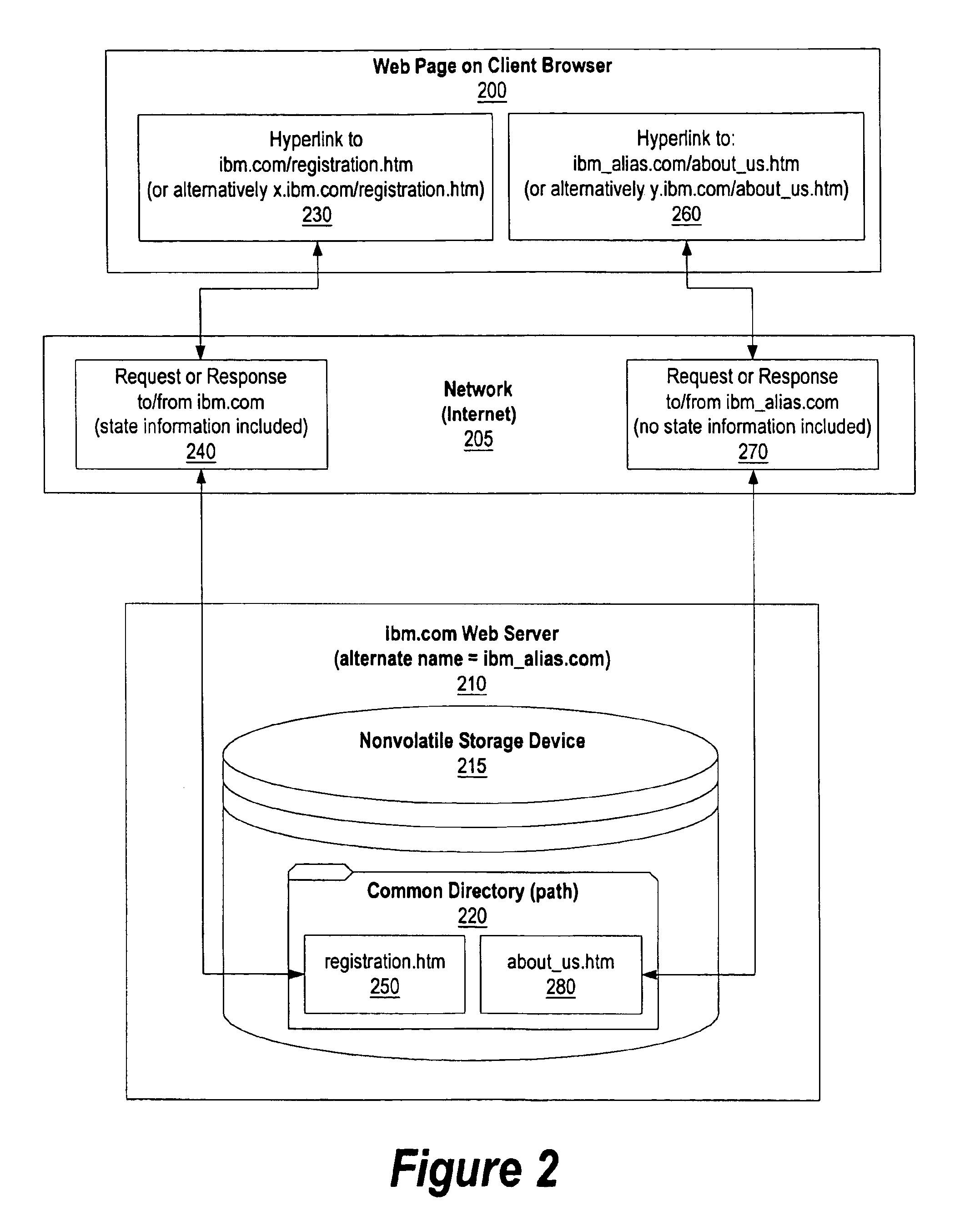System and method for improved handling of client state objects
a client and state object technology, applied in the field of system and method for improving the handling of client state objects, can solve the problems of site, site, access to the rest of the client computer, and the inability of the web site to determine the user's e-mail name, so as to improve the traffic between the server and the client.
- Summary
- Abstract
- Description
- Claims
- Application Information
AI Technical Summary
Benefits of technology
Problems solved by technology
Method used
Image
Examples
first example transaction sequence
1. Client requests a document, and receives in the response:Set-Cookie: CUSTOMER=WILE_E_COYOTE; path= / ; expires=Wednesday, 09-Nov-99 23:12:40 GMT2. When client requests a URL in path g / ” on this server, it sends:Cookie: CUSTOMER=WILE—E_COYOTE3. Client requests a document, and receives in the response:Set-Cookie: PART_NUMBER=ROCKET_LAUNCHER—0001; path= / 4. When client requests a URL in path “ / ” on this server, it sends:Cookie: CUSTOMER=WILE_E_COYOTE; PART_NUMBER=ROCKET_LAUNCHER—00015. Client receives:Set-Cookie: SHIPPING=FEDEX; path= / foo6. When client requests a URL in path “ / ” on this server, it sends:Cookie: CUSTOMER=WILE_E_COYOTE; PART_NUMBER=ROCKET_LAUNCHER—00017. When client requests a URL in path “ / foo” on this server, it sends:Cookie: CUSTOMER=WILE_E_COYOTE; PART_NUMBER=ROCKET_LAUNCHER—0001; SHIPPING=FEDEX
second example transaction sequence
(Assume all mappings from above have been cleared.)
1. Client receives:Set-Cookie: PART_NUMBER=ROCKET_LAUNCHER—0001; path= / 2. When client requests a URL in path “ / ” on this server, it sends:Cookie: PART_NUMBER=ROCKET_LAUNCHER—00013. Client receives:Set-Cookie: PART_NUMBER=RIDING_ROCKET—0023; path= / ammo4. When client requests a URL in path “ / ammo” on this server, it sends:Cookie: PART_NUMBER=RIDING_ROCKET—0023; PART_NUMBER=ROCKET_LAUNCHER—0001
NOTE: There are two name / value pairs named “PART_NUMBER” due to the inheritance of the “ / ” mapping in addition to the “ / ammo” mapping.
As illustrated above, a client computer has no way of determining whether a server actually needs a state object, such as a cookie. The browser, therefore, sends state object information to the server so long as the domain and path information matches. Because the current HTTP protocol is stateless, the state object must be included in all requests to the server regardless of whether the server needs the informatio...
PUM
 Login to View More
Login to View More Abstract
Description
Claims
Application Information
 Login to View More
Login to View More - R&D
- Intellectual Property
- Life Sciences
- Materials
- Tech Scout
- Unparalleled Data Quality
- Higher Quality Content
- 60% Fewer Hallucinations
Browse by: Latest US Patents, China's latest patents, Technical Efficacy Thesaurus, Application Domain, Technology Topic, Popular Technical Reports.
© 2025 PatSnap. All rights reserved.Legal|Privacy policy|Modern Slavery Act Transparency Statement|Sitemap|About US| Contact US: help@patsnap.com



